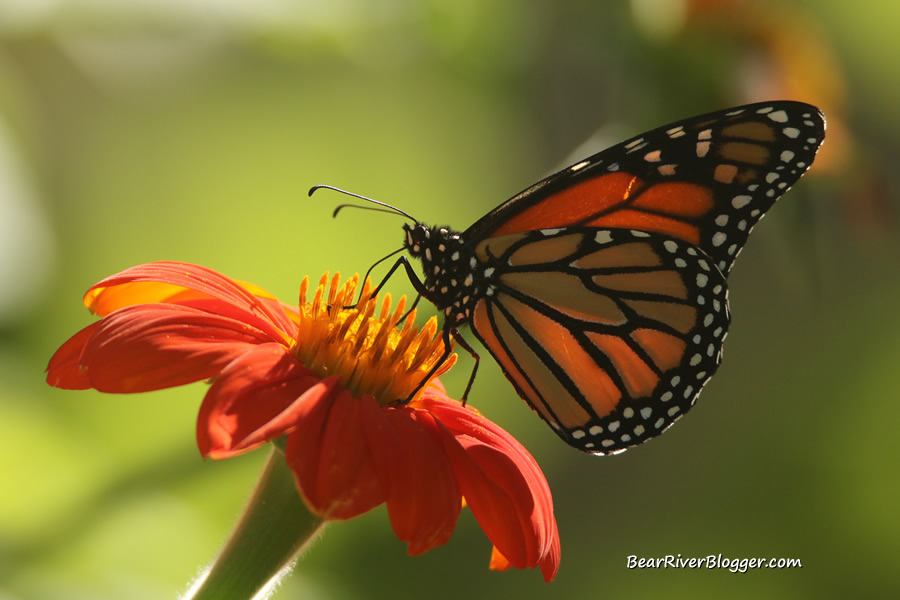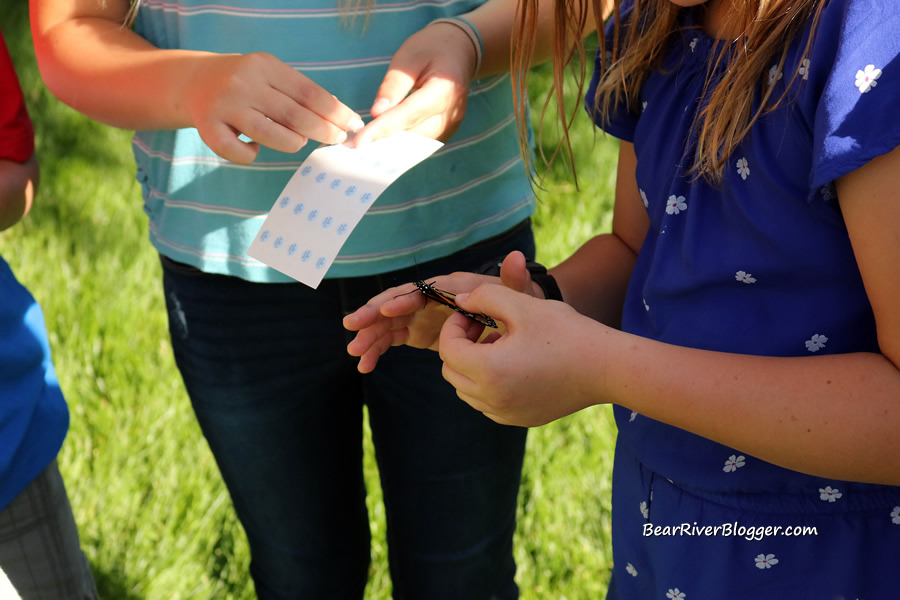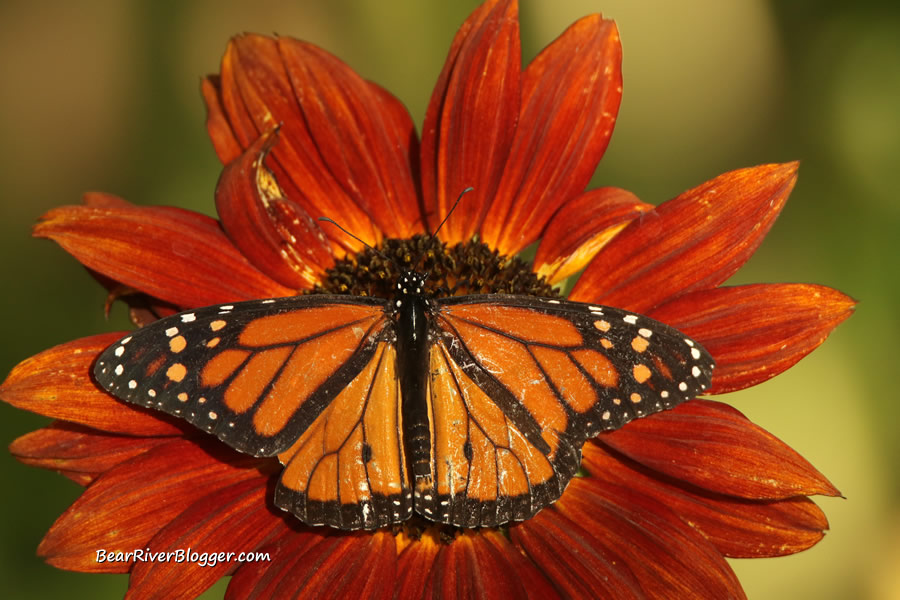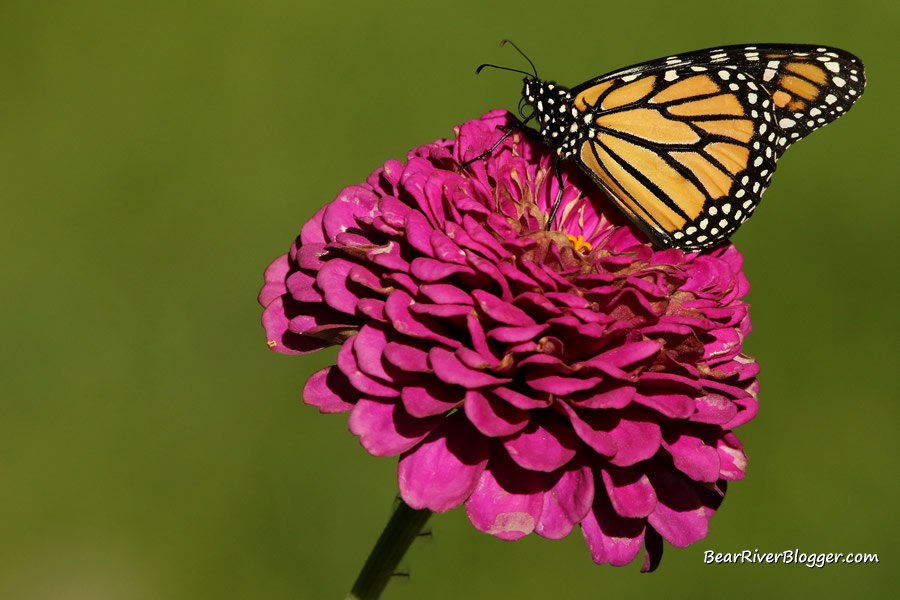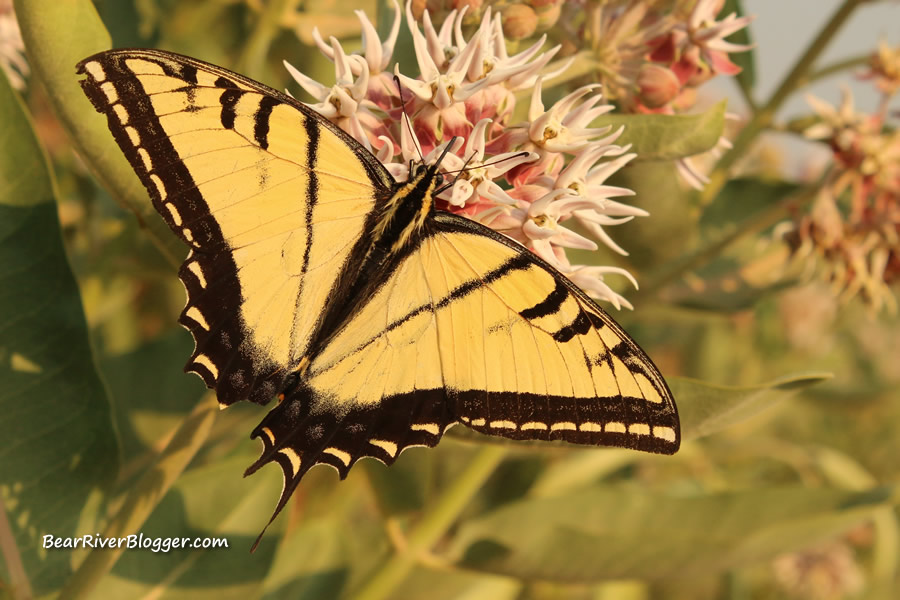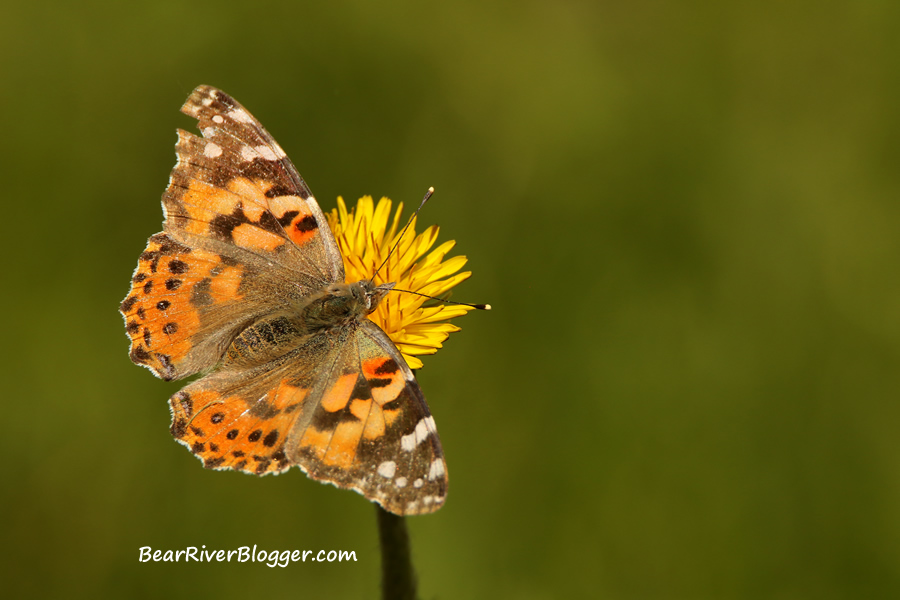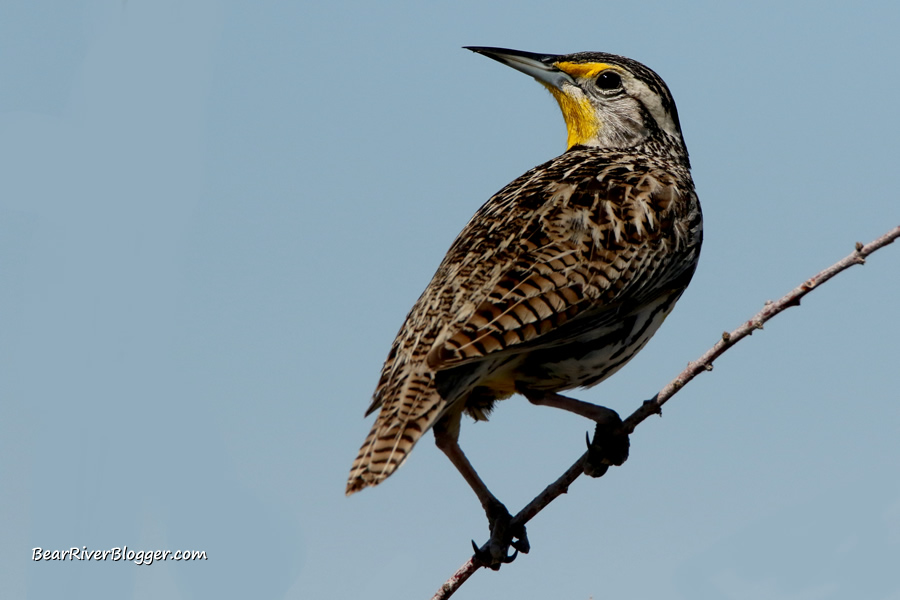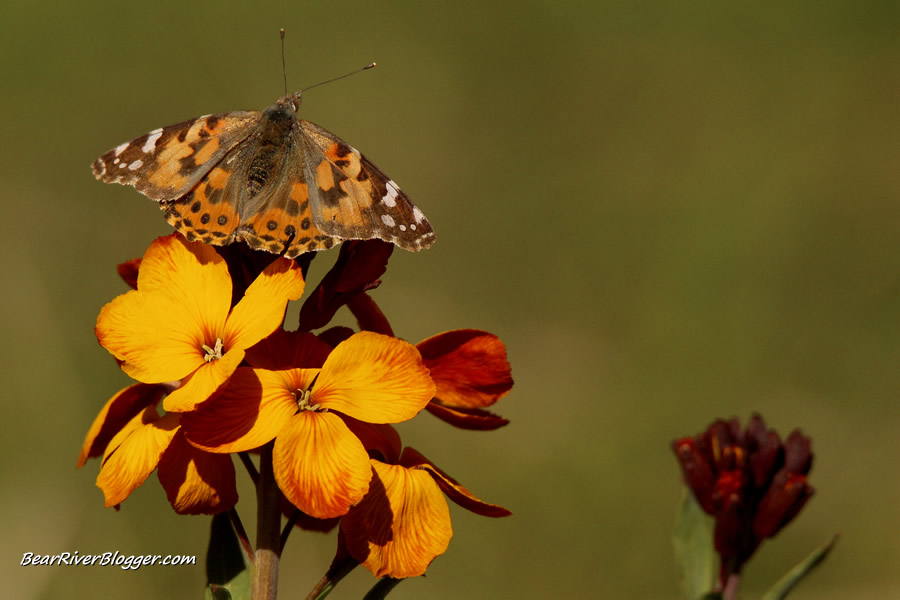You might think it’s a silly question to ask if monarch butterflies live in Utah, but many people I have talked to over the past couple of years actually didn’t realize the monarch does indeed migrate through, live, and lay their eggs in Utah during the summer months.
It’s puzzling when I hear people confess they have never seen a monarch butterfly in Utah as I regularly see these graceful orange and black butterflies each summer in my own yard and at various spots throughout northern Utah.
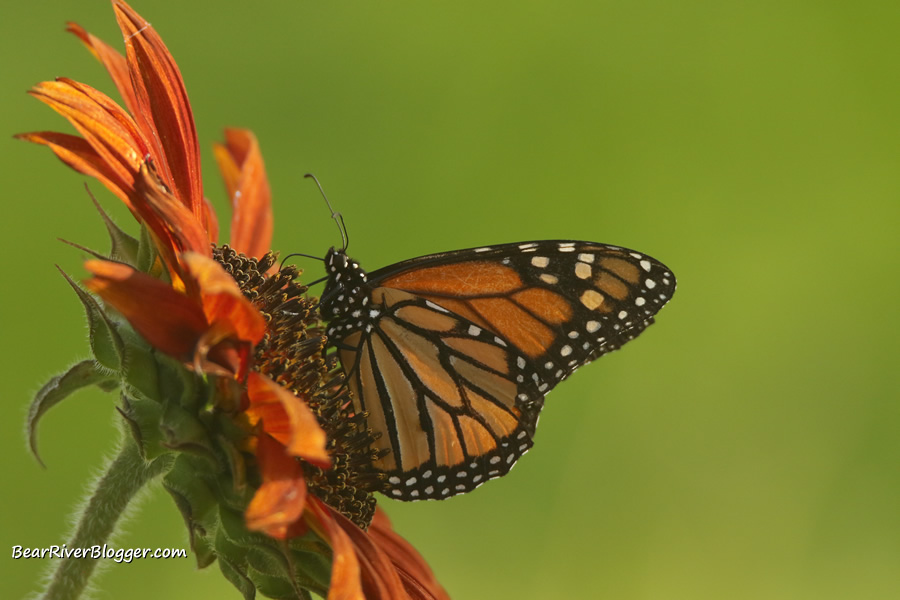
Some people I have met this year on the Bear River Migratory Bird Refuge have mentioned they used to see monarchs as kids around the farms and fields here in northern Utah but confess they haven’t seen one of these beautiful and unique butterflies in many years.
This is a frightening situation as the monarch butterfly used to be very common in Utah decades ago, but the western population is now facing the same problem monarchs are dealing with across the country as the overall nationwide population has plummeted.
In fact, one website I follow, provided by Utah’s Monarch Butterfly Conservation Initiative, has stated the monarch butterfly population in North America has declined more than 85-90% in the past 20 plus years.
This web site further declares the population west of the Rocky Mountains, which includes Utah, is at an all-time low where, as of December 2018, less than 30,000 monarchs were reported from the annual Western Monarch Thanksgiving Count by the Xerces Society.
Those are sobering statistics for sure.
Where Can I Find Monarch Butterflies In Utah?
Traditionally, monarchs are found around agricultural areas, mainly farms and pastures where milkweed grows wild in abundance. Unfortunately, however, northern Utah has seen a boom in the human population and much of the farming areas once filled with butterflies are now residential and commercial sites.
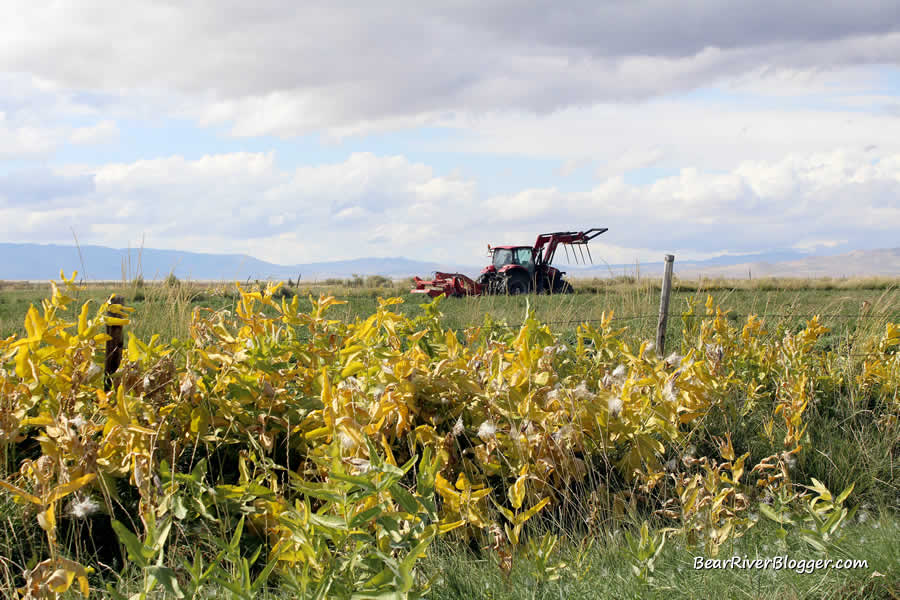
As an example, the small city I grew up in once had extensive farms and agricultural areas along the east shore of the Great Salt Lake, but now every acre of that land has been swallowed up by homes, businesses, and city parks.
The subdivisions literally end where the marshes begin, and these now urbanized areas were once great monarch habitats as well as productive farms but, sadly, are no longer.
In counties such as Box Elder and Cache County, for example, there are still areas where large scale agriculture is present and milkweed stands do still grow in Utah along ditches and roadways, but, it seems, these farming areas are also slowly giving way to inevitable development and a forever changing landscape.
For the mountain enthusiast, such as myself, monarchs can be found in Utah along some of our mountainous areas, such as Francis Peak up Farmington Canyon, for example, where small stands of milkweed grow wild and unaffected by human encroachment.
I have also heard of monarchs being spotted up Logan canyon, but I have not personally observed them on my visits. The canyon does have numerous stands of milkweed up and down this scenic highway, and I am hoping someday I can find monarchs there as well.
You can also find monarchs along riverways, such as the Jordan and Bear Rivers, for example, where there are still wild areas, and milkweed can grow and, sometimes, even flourish in large patches.

Areas managed by state and federal wildlife agencies, such as the Fish Springs National Wildlife Refuge and Farmington Bay WMA, just as a couple examples, are wildlife management areas where one might also see monarchs, despite these areas being managed mainly for migratory birds, such ducks, and geese.
Milkweed oftentimes grows well on its’ own in these large, protected state and federal wildlife management areas, which makes them quite suitable for monarch butterflies to come to and lay their eggs.
These areas are, unfortunately, oftentimes closed to public entry during the summer months to protect breeding bird species, so there are few if any opportunities to actually observe monarchs in such places during these sensitive times of the year.
Despite them being under lock and key for parts of the year, however, areas such as these government-managed lands are important for monarchs, in particular, and nature, as a whole, so the inaccessibility is a small price to pay for protecting vital wildlife habitat for future generations to enjoy.
Are There Monarch Butterflies On The Bear River Migratory Bird Refuge?
I can personally attest to monarch butterflies are indeed found on the Bear River Migratory Bird Refuge here in northern Utah during the summer and fall months.
Each time I tell someone I find monarchs on the refuge, I am almost always greeted with a confused and surprised response. In fact, many people don’t know there are quite a few different species of butterflies, including monarchs and painted ladies, which visit or just live on the refuge each summer.

I spend many hours each year searching for and photographing monarchs on the refuge, and it is quite common for me to find these beautiful butterflies flying up and down the refuge auto tour route.
I have also seen adult monarchs and caterpillars around the refuge visitors center, where stands of both showy and swamp milkweed are present.
This summer, I helped participate in a monarch research project for the Southwest Monarch Study, where I searched for monarch eggs, caterpillars, and adult butterflies each week on the Bear River Migratory Bird Refuge.
Sadly, this was a very poor year for monarchs on the bird refuge as I only found one caterpillar and a small handful of adult monarchs on the wing.
But there is much hope for the monarch butterfly on the Bear River Migratory Bird Refuge, however. The refuge land does support 2 varieties of milkweed, both showy and swamp, and there is a variety of nectar plants, such as wild sunflowers, rabbitbrush, milkweed, and rocky mountain bee plant in this very diverse wetland habitat, all of which together provides suitable habitat for the monarch butterfly on the refuge.
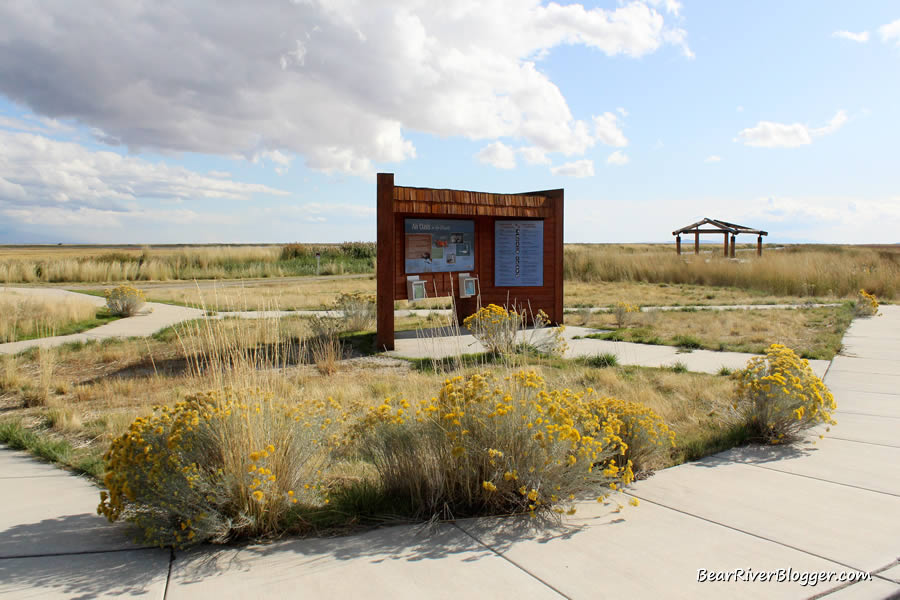
There is also much interest by the bird refuge itself and also by the U.S. Fish and Wildlife Service to help the monarch population increase on the Bear River Migratory Bird Refuge and abroad as well as help educate the public on both monarch butterflies specifically and pollinator species in general.
When Should I Be Finding Monarchs In Utah?
Finding monarchs in Utah is a summer and early fall event, typically around June to October, as a general rule. This does vary a bit depending on how far north or south you are, but, generally speaking, these are the months here in Utah we can expect to find monarch butterflies, either breeding or just migrating through.
I recently checked my Facebook posts and the first monarch I was able to photograph this year was on June 8, 2019, on the Bear River Migratory Bird Refuge. I did, however, see my first monarch of the year about a week earlier in my yard, but I was unable to get a photograph at the time.
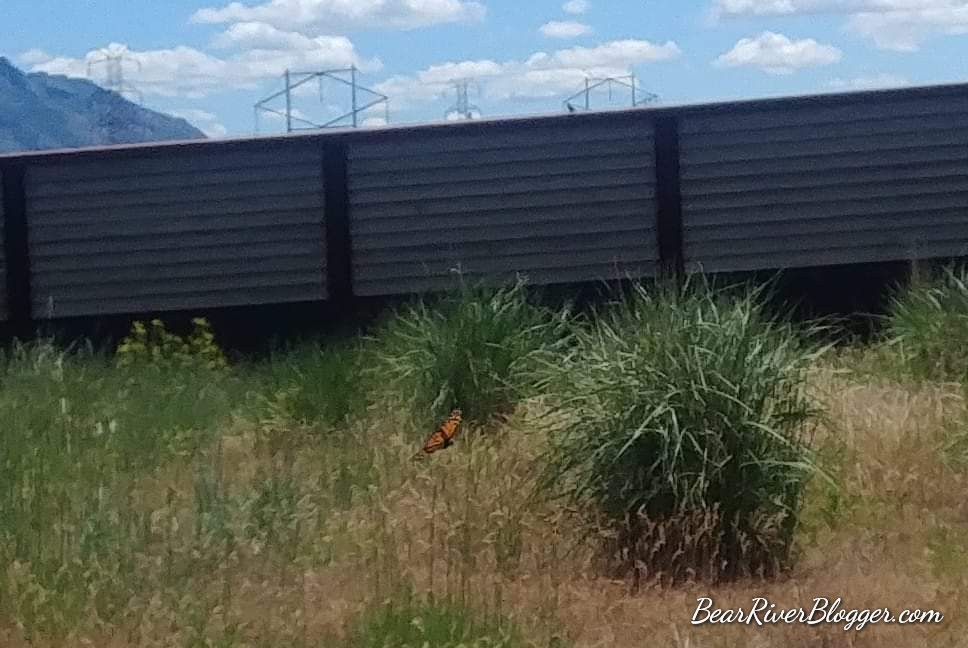
Usually, by the end of September, the last generation of monarchs here in Utah are heading south. A few can still be seen in late September and early October, depending on both how far south one is and the current prevailing weather conditions.
I think my last monarch sighting this year was mid-September and I am in far northern Utah.
For my area, the Southwest Monarch Study has determined September 1 – Sept 30 is the peak migration time frame, and from what I see each year, that sounds about right.
This year, in my own yard, I observed the most monarchs early to mid-September, but then I saw nothing after about the middle of the month.
The short period of their peak fall migration is when we should see the most monarch butterflies, at least from my experience, that is. This is when the last monarch generation feeds on nectar for energy and heads southward to its wintering grounds, sometimes migrating through areas in large numbers, depending on the location.
Typically, the further along the migration route you are, the more monarchs you should expect to see as they migrate through traditional pathways, congregating and building up numbers as they go.
Why Am I Not Seeing Monarch Butterflies In Utah?
There are a couple of reasons why we don’t see monarch butterflies during the summer in Utah.
The most common reason is their population has been in steep decline over the past several decades, so there are fewer monarchs today than there were 20 years ago. Fewer monarchs mean fewer opportunities to find and observe them.
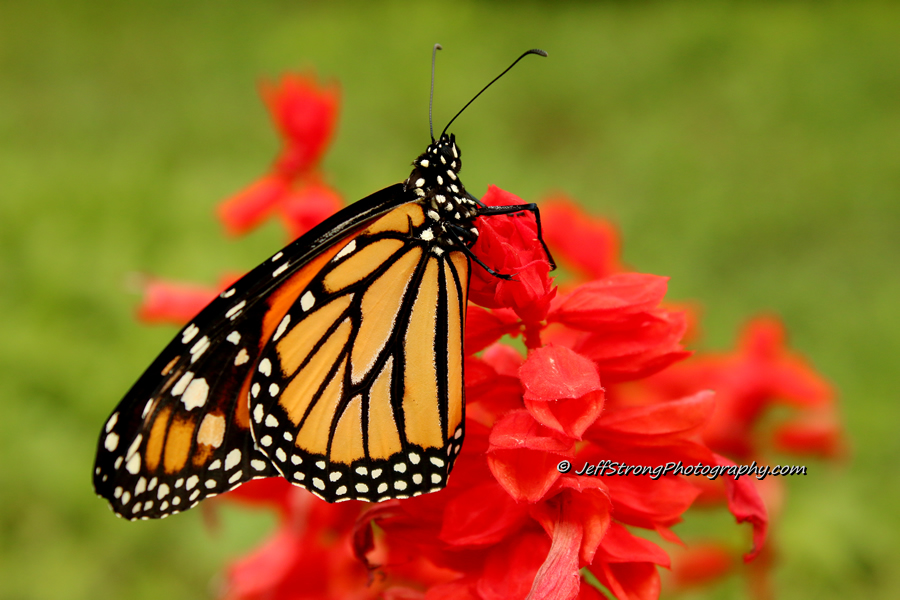
As stated before, the western population has been said to have declined to just 30,000 butterflies this past winter, so it’s understandable from just that sobering news why it could be challenging to find monarch butterflies out and about.
Fewer monarchs mean fewer sightings. Sounds pretty straightforward, doesn’t it? It does, but there is also another reason why monarchs can be, it seems at least, few and far between during various times of the summer months.
Interestingly enough, it’s a reason which is actually part of their fascinating biology and why we may not see many monarchs for short stretches during the summer, especially early in the season.
Monarch butterflies breed and lay their eggs on milkweed but soon die afterward. Adult breeding monarch butterflies only live about two to five weeks as their main purpose in life is to migrate northward and breed the next generation.
During this downtime, as eggs are hatching and caterpillars are growing, there will be a lot fewer monarch butterflies out and about due to this short life span as breeding adults and, as a result, the adult population can be pretty sparse for a few weeks, especially when overall population numbers are low to begin with.
The good news is, however, as the caterpillars grow and eventually metamorphize into monarchs, this downturn in sightings is short-lived. Hopefully, with each emerging generation of monarchs, we see more and more of these beautiful butterflies as the summer progresses.
Lastly, finding monarchs can be a matter of location, location, location. If you aren’t in an area that attracts monarch butterflies, areas with good, healthy stands of milkweed, it can be quite uncommon to see a monarch butterfly migrating through or passing by in search of their desired suitable habitat.
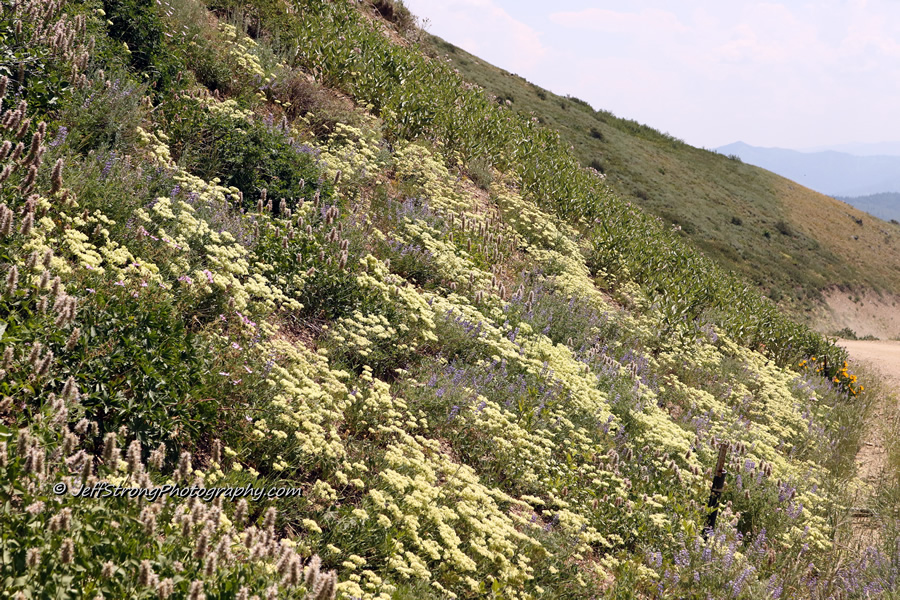
This can be quite a common situation in urban areas as cities continue to grow and replace open space and vegetation with buildings and parking lots.
Simply put, you need to be where monarchs want to be in order to find them and that is around milkweed plants, plain and simple.
Why Are There Fewer Monarchs Now?
This is a much harder question to answer as there are many reasons why scientists believe their numbers have been in steep decline over the past couple of decades.
The simple answer is the loss of habitat, mainly the loss of milkweed. The milkweed plant, which consists of a variety of types of related vegetation referred to as milkweed as a whole, is the only plant monarch butterflies will lay their eggs on, and it’s the only plant the monarch caterpillar will eat.
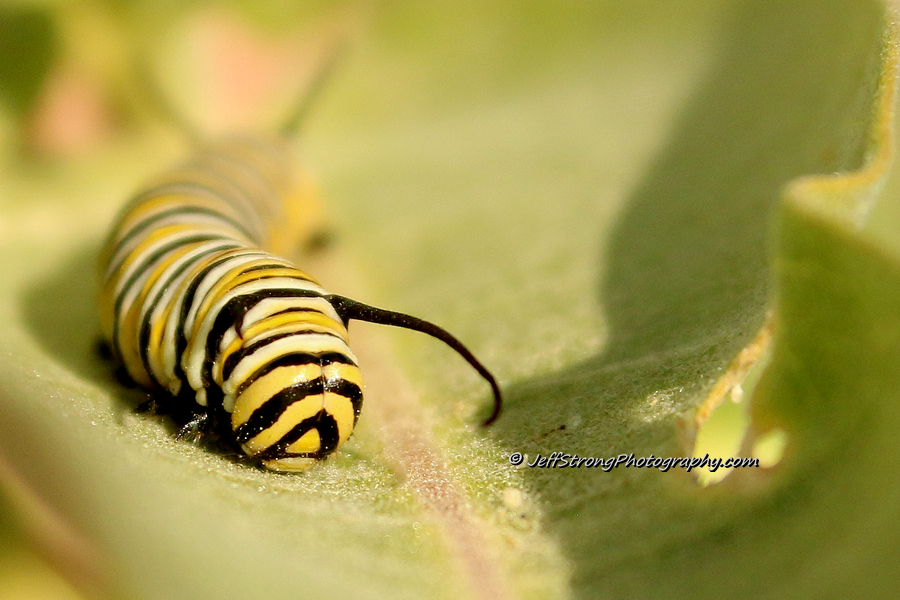
It’s a simple relationship really, no milkweed means no monarchs. As milkweed plants decline in numbers, so will the monarch butterfly population also dwindle.
Loss of habitat due to residential and commercial development are key factors in declining monarch butterfly populations. As cities expand and grow, the demand for land to build upon increases, and large plots of land, such as farms and pastures, areas which traditionally grow milkweed, are forever altered with asphalt, concrete, and steel.
Other factors, such as herbicides and pesticides, have been claimed to be a contributing factor as well. These chemicals kill monarch eggs and caterpillars, and herbicides will also kill the milkweed plant itself.
This is something we all need to think about the next time we consider spraying our yards. Many important and interesting insects, including pollinators vital for the regeneration process referred to as pollination, are being affected and killed by our drive for a perfect looking yard.
It’s no secret milkweed is the key to healthy monarch populations. But the hard question is how, where, and why are milkweed plants disappearing. There is no one easy, clear-cut answer as there are many factors involved but, rest assured, there is a direct connection between available milkweed stands and monarch butterfly populations.
Monarchs need milkweed to survive, so if we are to reverse this dismal trend of a diminishing monarch population, we need to increase milkweed stands, ideally intertwined with nectar plants when possible, in suitable areas monarchs tend to migrate through.
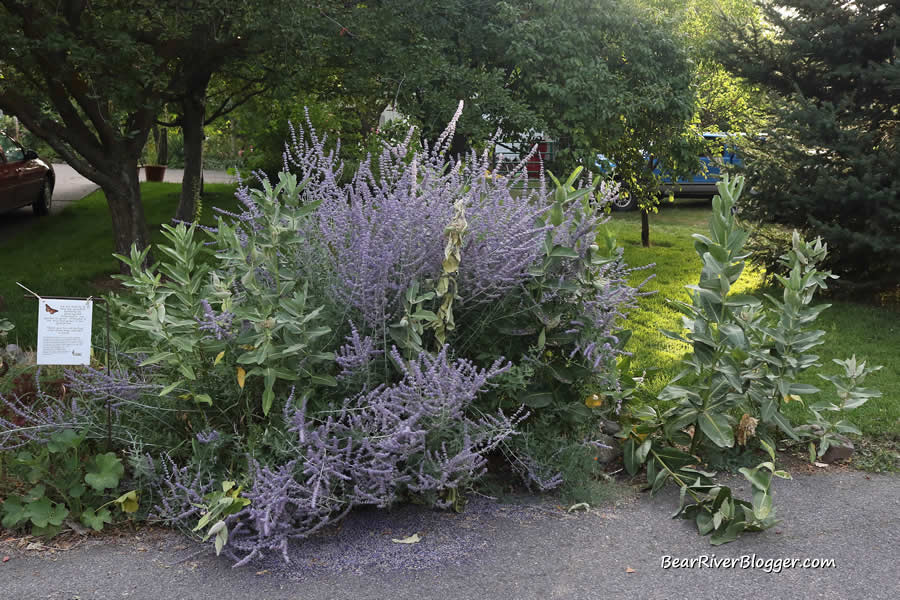
Where Do Monarch Butterflies From Utah Migrate To And From?
Migration is a most interesting but also a very frustrating subject regarding the monarch butterfly.
Finding out when and where monarch butterflies migrate to and through is vital in protecting key habitats and expanding the butterfly’s overall numbers. These areas, once known, can be areas where habitat enhancements and protections can and should be implemented to help the monarch population.
Because of the small size and delicate nature of butterflies, it is hard to track and follow them as they move from one area to the next. The truth is, scientists know very little about the monarch migration because of this difficulty. But scientists and volunteers alike are working hard to eventually discover all of the areas monarch butterflies utilize along their entire migration route as well as their wintering areas.
We do know western monarchs winter in parts of California, Mexico, and the lower deserts of Arizona and, during the fall migration, small clusters of western monarchs have been documented in Lake Havasu City, Parker, and in Canelo, Arizona.
The bottom line is, unfortunately, we still don’t know much about the western monarch butterfly population with regards to migration routes and wintering sites. There is hope, however, in finding out the mystery behind this magical event in nature due to the efforts of scientists and citizens alike who are diligently working on tracking the monarch butterfly migration each year.
How do Scientists Track Monarch Migration?
A process developed years ago, referred to as tagging, has been implemented nationwide by various conservation groups in different regions to mark and track monarch butterflies.
Basically, the process is simple whereas, during late summer, volunteers catch and place a small sticker on the wing of the butterfly. The butterfly is then released, unharmed, to migrate south.
The sticker, provided and recorded by the overseeing conservation group, has a number and contact information on it, which identifies each individually tagged monarch as to when and where it was initially tagged and released.

As the butterfly migrates, the hope is people along the migration route will observe these tagged monarchs and report the sighting. It’s not easy to find tagged monarchs, especially due to the small size of the tags, and every tag sighting is crucial in piecing together this mystery.
By doing this process, over and over again, year after year, we can finally start to piece together the mysteries which surround the magical and largely unknown facts about monarch migration.
The important aspects of a successful tagging program are tagging the last generation of adult monarchs who are preparing to migrate south and observing tagged monarchs on the migration and on wintering sites to collect much-needed data.
It takes a lot of time and effort to observe monarchs in hopes of finding even one tag, but the more monarchs being tagged each year means more opportunities to find tagged monarchs for this research.
This means great numbers need to be tagged each year so even moderate recovery successes can be achieved, and you can help in this endeavor, in fact, but more about that in a minute.
What Can I Do To Help The Monarch Butterfly?
The good news of all of this is we can all make a difference in helping the monarch butterfly population rebound to a safe and sustainable level. We can start by planting milkweed and nectar-producing plants in our own yards. Every stand of milkweed can and does help.
Both the showy milkweed and swamp milkweed are perennial plants that grow wild in Utah and come back each year. Showy milkweed and swamp milkweed can both be grown in a backyard garden to attract monarch butterflies, as well.
The most common variety of milkweed in Utah is showy milkweed, and it’s seed pods are easily found hanging from mature plants along roadsides in agricultural areas during fall.
Milkweed is invasive by both seed and rhizome (shallow underground roots connecting numerous plants) so plant it in an area where spreading won’t be a bother, like in a remote corner of the yard.
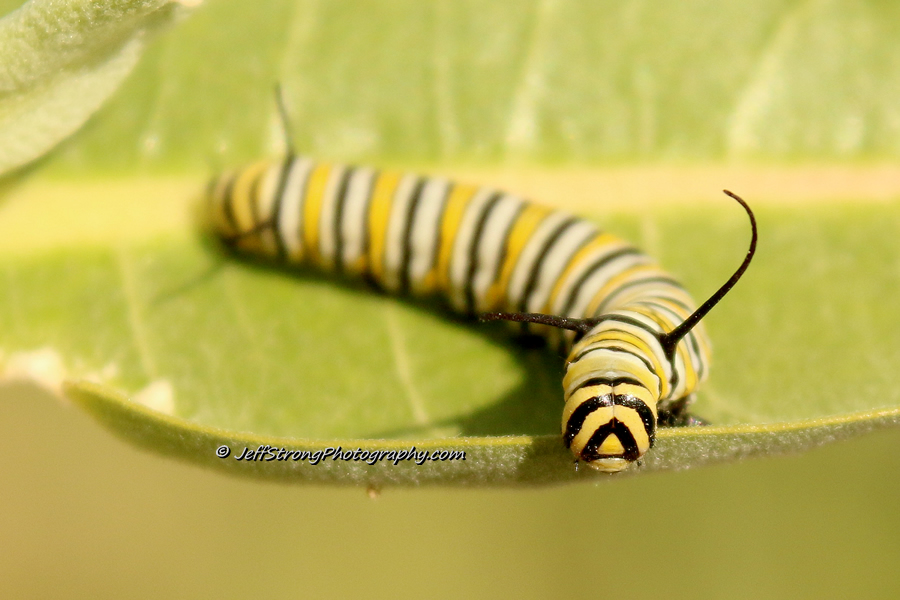
I have been told by several experts in the field that the success rate of monarch eggs hatching and reaching the butterfly stage is about 1-2 per 100. That means a lot of milkweed is needed to give more eggs a viable chance to survive as predation on eggs and caterpillars is, as you can see, quite high.
The theory of having a great abundance of milkweed is it allows female monarchs to lay eggs on a number of different plants, instead of having to lay a bunch of eggs on one plant where there might be awaiting predators to have a quick and easy meal.
By spreading out the eggs, in theory, it can possibly help more monarch eggs survive, even if it is only one or two more from each female monarch. Each egg is critical, especially when numbers are low, so having more milkweed for female monarchs to choose from will only help the egg-laying efforts.
Another part we can participate in is the annual tagging and releasing of monarch butterflies in late summer. If you live in an area where monarchs are present, there should be a conservation group overseeing these efforts.
For Utah, the Southwest Monarch Study is the governing group handling the tagging efforts, and you can visit their website to learn more about how to participate in the yearly tagging efforts.
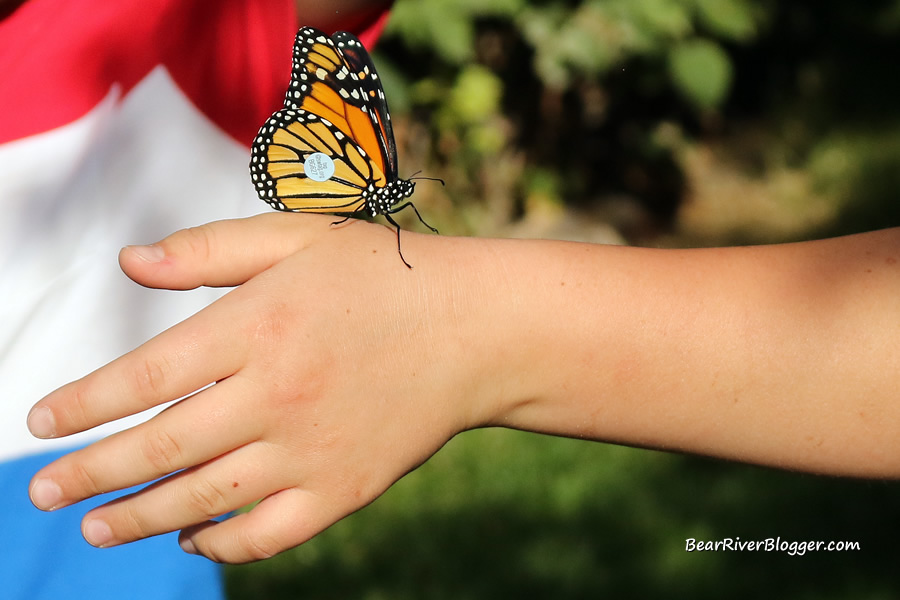
As mentioned earlier, pesticides and herbicides are deadly to eggs and caterpillars, as well as milkweed. We can also help the monarch conservation effort by choosing not to spray these chemicals in our yards.
Personally, I never spray anything in my yard, and I am slowly turning my property into a more bird, butterfly, and pollinator-friendly space by reducing my lawn area and increasing the milkweed, bushes, nectar plants, and flowers in my yard.
It reduces the time I spend on yard work, and I get to watch birds and butterflies up close and personal in my own yard, so for me, at least, it’s a win-win situation.
Conclusion
Well, I hope this blog post has helped encourage you to take part in the conservation efforts for the monarch butterfly. If nothing else, I hope I have at least caused you to think about monarch butterflies in an effort that you might see the beauty which exists as they come to our yards each summer to lay eggs on our milkweed and nectar on our flowers.
The life cycle of the monarch butterfly is nothing short of a fascinating phenomenon for sure, and one I hope will continue for years to come. We all can make a contribution to the conservation efforts and survival of the monarch butterfly.
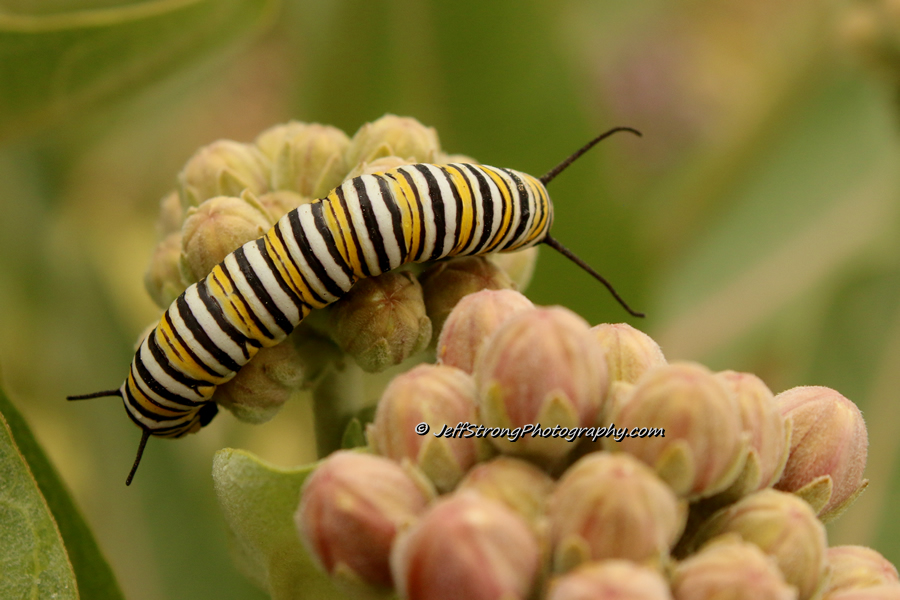
The monarch is one of the most beautiful and fascinating creatures we have in nature, so delicate but very strong and resilient as they migrate thousands of miles to their wintering grounds each fall.
I urge you to get interested in and learn more about the monarch butterfly. I find them fascinating to watch as well as to photograph, and each summer, I look forward to their arrival.
Below are some of the images I have taken, both from my own yard and from the Bear River Migratory Bird Refuge, in hopes of showing off their delicate beauty.
If you are interested in nature, feel free to subscribe to this blog via email so you can get notifications each time we post an article.
Until next time, I hope you can find some time to get out and enjoy the natural world around us. It is truly quite breathtaking.
Photographs Of Monarch Butterflies

